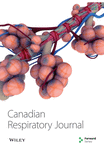Impact of Excessive Daytime Sleepiness on The Safety and Health of Farmers in Saskatchewan
Abstract
BACKGROUND: Sleep disorders may negatively impact the health and well-being of affected individuals. The resulting sleepiness and impaired cognitive functioning may also increase the risks for injury.
OBJECTIVE: To examine the relationship between daytime sleepiness, defined as an Epworth Sleepiness Scale score >10, and self-reported sleep apnea, as potential determinants of farming-related injury and self-perceived physical health.
METHODS: Phase 2 of the Saskatchewan Farm Injury Cohort Study (2013) involved a baseline survey that included 2849 individuals from 1216 farms. A mail-based questionnaire was administered to obtain self-reports regarding sleep, demographics, farm injuries and general physical health. Multilevel logistic regression was used to quantify relationships between excessive daytime sleepiness and health.
RESULTS: The prevalence of excessive daytime sleepiness was 15.1%; the prevalence of diagnosed sleep apnea was 4.0%. Sleepiness was highest in the 60 to 79 (18.7%) and ≥80 (23.6%) years of age groups, and was higher in men (19.0%) than in women (9.3%). Injuries were reported by 8.4% of individuals, and fair or poor health was reported by 6.2%. Adjusting for confounding, individuals with excessive daytime sleepiness appeared more likely to experience a farming-related injury (OR 1.34 [95% CI 0.92 to 1.96]) and were more likely to report poorer physical health (OR 2.19 [95% CI 1.45 to 3.30]) than individuals with normal daytime sleepiness.
CONCLUSION: Excessive daytime sleepiness, a potentially treatable condition, appeared to be common in farmers and to negatively affect their health. Sleep disorder diagnosis and treatment programs did not appear to be used to their full potential in this population.




